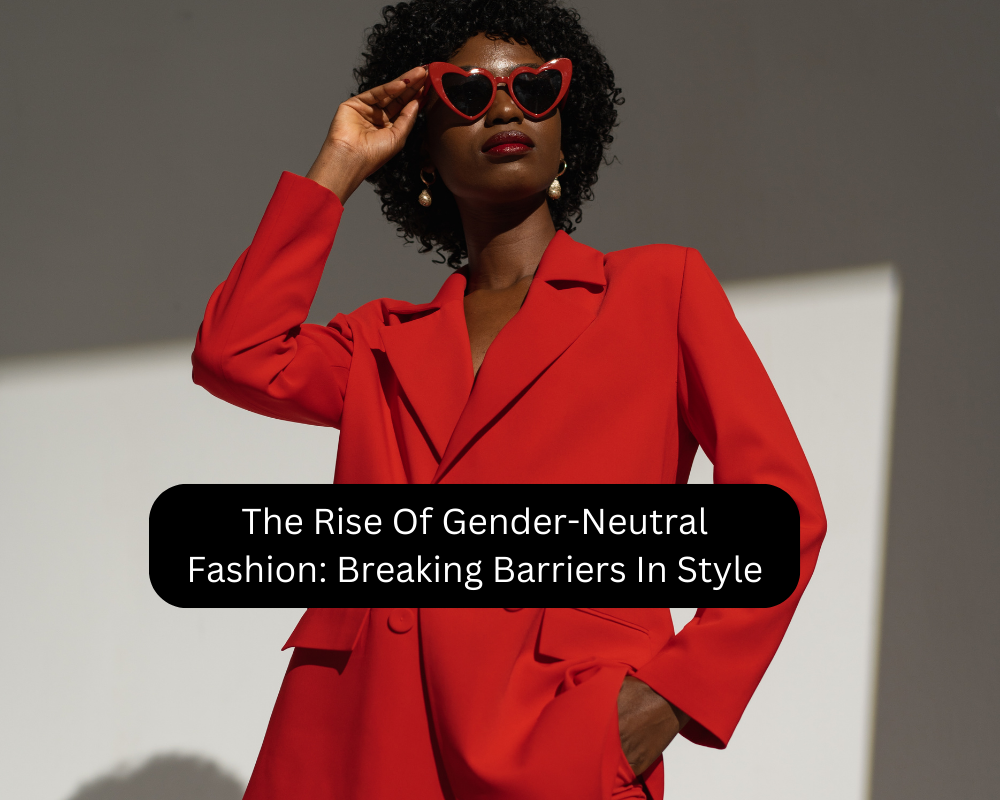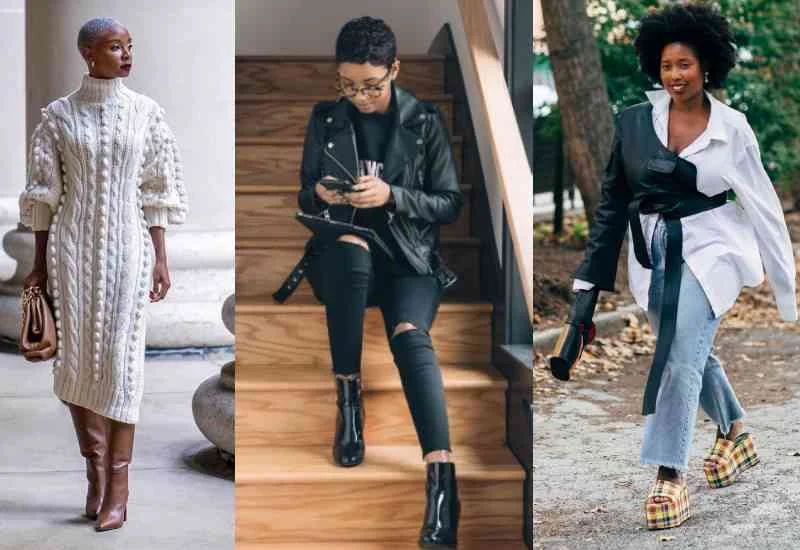In recent years, the fashion industry has witnessed a transformative shift towards gender-neutral fashion, a movement that is breaking barriers on global runways. This innovative approach challenges traditional gender norms, allowing individuals to express their identity through clothing without the constraints of conventional male or female categories. As designers embrace inclusivity, the concept of gender-neutral fashion is not just a trend; it is a revolution that is reshaping the very fabric of the fashion world.
In this article, we will delve into the origins and evolution of gender-neutral fashion, exploring how it has gained momentum in recent seasons. You will learn about key designers and brands that are leading the charge, as well as the cultural and societal influences that have propelled this movement forward. From the runways of Paris to the streets of New York, gender-neutral fashion is making waves, and we will highlight the most significant moments that have defined this exciting trend.
Furthermore, we will discuss the implications of gender-neutral fashion on consumer behavior and the retail landscape. How are brands adapting to meet the demands of a more inclusive audience? What does the future hold for gender-neutral collections? By the end of this article, you will have a comprehensive understanding of the impact of gender-neutral fashion on the industry and society as a whole. Join us as we explore this fascinating topic and uncover the barriers being broken in the name of style and self-expression.
Gender-neutral fashion is revolutionizing the way we perceive clothing and identity. As traditional gender norms continue to evolve, the fashion industry is responding by embracing inclusivity and diversity. This article explores various aspects of gender-neutral fashion, highlighting its significance in global runways.
The Rise of Gender-neutral Fashion
The emergence of gender-neutral fashion can be traced back to the growing awareness of gender fluidity and non-binary identities. Designers are increasingly creating collections that cater to all genders, breaking away from the conventional male and female categories. This shift not only reflects societal changes but also challenges the long-standing norms of the fashion industry.
As more consumers seek clothing that resonates with their identity, brands are recognizing the importance of inclusivity. This trend is evident in major fashion weeks around the world, where gender-neutral collections are gaining visibility and acceptance. The rise of gender-neutral fashion signifies a broader cultural movement towards acceptance and understanding of diverse identities.
Key Designers Leading the Movement
Several designers have emerged as pioneers in the gender-neutral fashion movement. Brands like Telfar, Rad Hourani, and Maison Margiela are at the forefront, creating innovative designs that defy traditional gender boundaries. These designers prioritize comfort and self-expression, allowing individuals to choose clothing that reflects their personal style rather than conforming to societal expectations.
By showcasing their collections on global runways, these designers are not only promoting their brands but also advocating for a more inclusive fashion landscape. Their work inspires other designers to explore gender-neutral options, fostering a collaborative environment that encourages creativity and diversity.
The Impact of Social Media
Social media has played a crucial role in the proliferation of gender-neutral fashion. Platforms like Instagram and TikTok allow individuals to showcase their unique styles, often blending elements from both traditional male and female wardrobes. This visibility has empowered consumers to embrace their identities and challenge conventional fashion norms.
Moreover, social media influencers and activists are using their platforms to promote gender-neutral brands, further amplifying the message of inclusivity. As a result, the fashion industry is becoming more responsive to consumer demands, leading to a greater variety of gender-neutral options available in the market.
Consumer Demand for Inclusivity
The demand for gender-neutral fashion is driven by a growing consumer base that values inclusivity and self-expression. Many individuals are seeking clothing that transcends traditional gender categories, opting for pieces that allow them to express their unique identities. This shift in consumer behavior is prompting brands to rethink their marketing strategies and product offerings.
As a result, many retailers are expanding their size ranges and offering unisex options, catering to a diverse audience. This trend not only benefits consumers but also enhances brand loyalty, as individuals are more likely to support companies that align with their values of inclusivity and acceptance.
Challenges Faced by Gender-neutral Brands
Despite the progress made in gender-neutral fashion, several challenges remain. One significant hurdle is the resistance from traditional retailers who may be hesitant to embrace this shift. Many brands still adhere to conventional gendered marketing strategies, which can limit the visibility of gender-neutral options.
Additionally, there is a need for greater representation of diverse body types and identities within gender-neutral fashion. Brands must strive to create inclusive designs that cater to a wide range of consumers, ensuring that everyone feels represented and valued in the fashion landscape.
The Role of Fashion Weeks
Fashion weeks around the world serve as a platform for showcasing gender-neutral collections. Events like New York Fashion Week and London Fashion Week have begun to feature designers who prioritize inclusivity, allowing them to reach a broader audience. This visibility is crucial for promoting gender-neutral fashion and encouraging other designers to follow suit.
Moreover, fashion weeks are evolving to include discussions and panels on gender inclusivity, further emphasizing the importance of this movement within the industry. By fostering dialogue and collaboration, these events contribute to a more inclusive fashion ecosystem.
Future Trends in Gender-neutral Fashion
The future of gender-neutral fashion looks promising, with several trends emerging on the horizon. Sustainability is becoming a key focus, as consumers increasingly demand eco-friendly options. Brands that prioritize sustainable practices while offering gender-neutral designs are likely to resonate with a conscious consumer base.
Additionally, advancements in technology, such as 3D printing and virtual fashion, may further revolutionize the industry. These innovations could lead to more customizable and accessible gender-neutral clothing, allowing individuals to express their identities in unique ways.
Conclusion: Embracing Diversity in Fashion
Gender-neutral fashion represents a significant shift in the fashion industry, promoting inclusivity and diversity. As more designers and brands embrace this movement, the landscape of global runways is evolving to reflect a broader range of identities. By breaking down traditional barriers, gender-neutral fashion is paving the way for a more inclusive future, where everyone can express themselves freely through clothing.
Ultimately, the success of gender-neutral fashion relies on the collective efforts of designers, consumers, and industry leaders to foster an environment that celebrates diversity and encourages self-expression. As we move forward, it is essential to continue advocating for inclusivity in fashion, ensuring that all individuals feel seen and valued.
| Aspect | Description |
|---|---|
| Definition | Gender-neutral fashion refers to clothing that is designed to be worn by individuals regardless of their gender identity, promoting inclusivity and breaking traditional gender norms. |
| Historical Context | Fashion has historically been divided into male and female categories. However, movements for gender equality and LGBTQ+ rights have influenced a shift towards more inclusive fashion. |
| Current Trends | Many designers and brands are now creating collections that feature unisex clothing, focusing on comfort, versatility, and style that transcends gender. |
| Impact on Runways | Global runways are increasingly showcasing gender-neutral collections, challenging traditional fashion shows and encouraging a broader representation of identities. |
| Key Designers | Designers like Rad Hourani, Telfar Clemens, and others are at the forefront of the gender-neutral fashion movement, creating pieces that appeal to a diverse audience. |
| Consumer Response | There is a growing demand for gender-neutral fashion among consumers, particularly younger generations who prioritize self-expression and inclusivity in their clothing choices. |
| Challenges | Despite progress, challenges remain, including societal perceptions, marketing strategies, and the need for more widespread acceptance of gender-neutral clothing. |
| Future Outlook | The future of fashion is likely to see an increase in gender-neutral options, as brands continue to adapt to changing societal norms and consumer preferences. |




